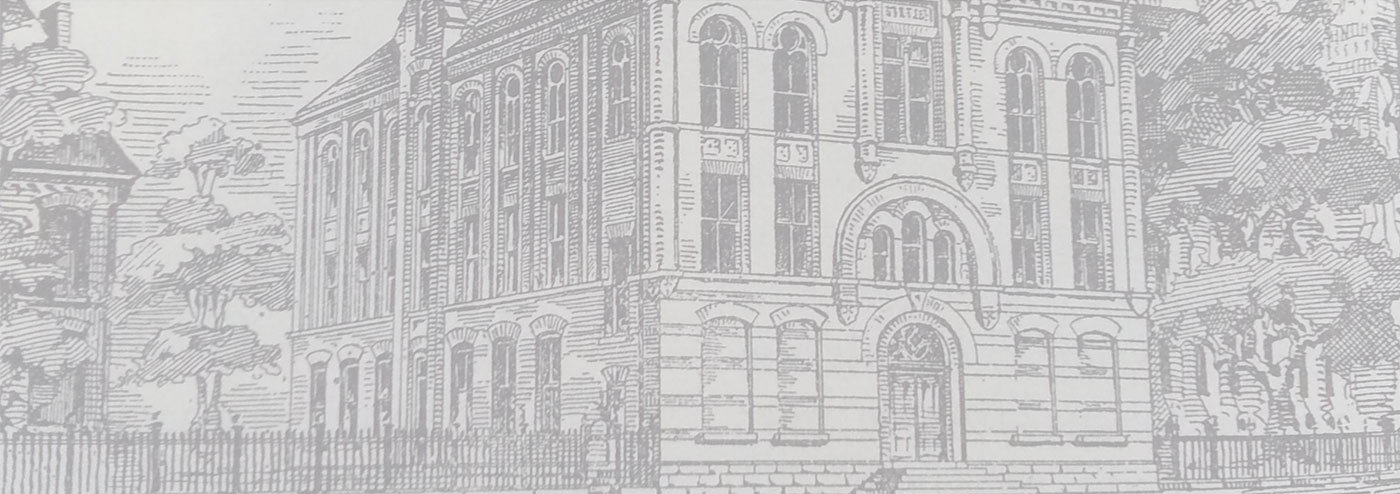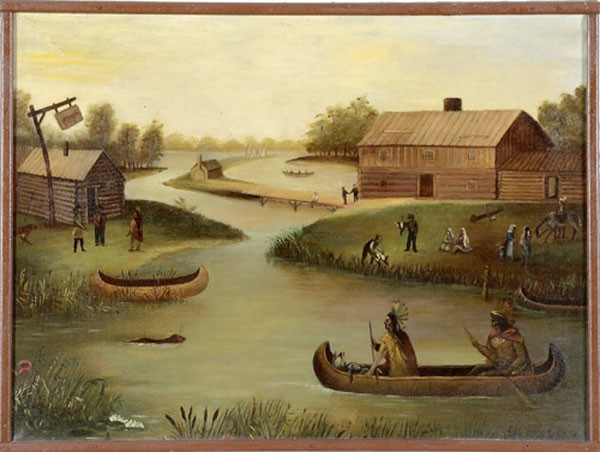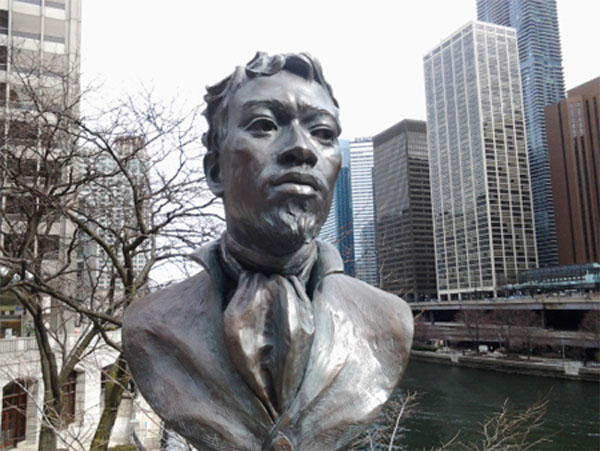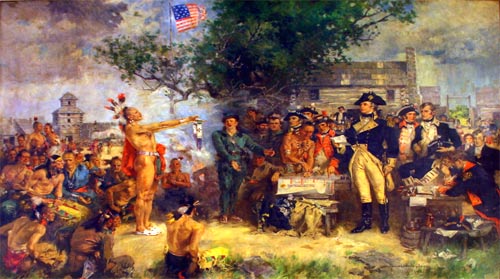17th and 18th Century
Long before our City of Chicago and long, long before St. Teresa of Avila Parish, Native Americans lived on and fought for the same land we now occupy. There is a long and complex story of Native American, European, United States of America and immigrant history of our city. The following hopes to bring a broader picture to what we experience today at St. Teresa of Avila, a story of the land and the people who paved the way for our parish.
On May 17, 1673, Louis Jolliet and Father Jacques Marquette begin their quest from the Mission de Saint-Ignace. on the strait of Mackinac. They traveled in two canoes in the company of five donnes south on Lake Michigan, up the Fox River and portaged to the Wisconsin River [Fox-Wisconsin Portage]. On June 17, they discover the Mississippi River by canoeing down the Wisconsin.
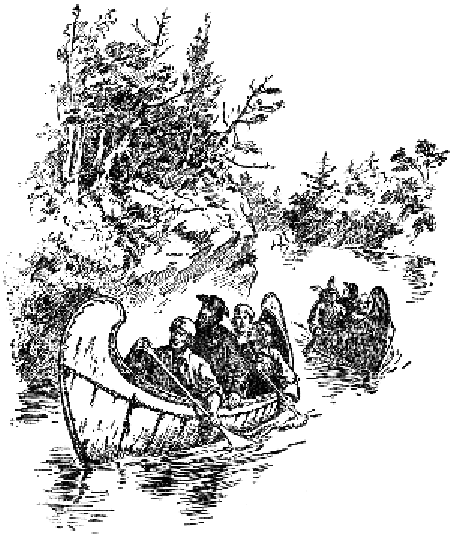
In September 1673, Chicago`s recorded history begins. Louis Jolliet and Father Marquette portage to the Chicago River and discover the future site of Chicago; this is the first historically confirmed presence of Europeans at Chicago and the beginning of Catholic presence in the area.
Migration and settlement slowly proceeded:
- The Chicago area becomes American in 1776.
- By 1785, the Illinois and Chicagou rivers have become safe for trade and travel.
- Perhaps in this year [possibly as early as 1784, but certainly no later than 1788] Jean Baptiste Point du Sable, founder of modern Chicago, relocates from near Detroit.
- Two year later Point du Sable and Catherine, his Indian wife of many years, travel from Chicagou to Cahokia to have their marriage solemnized by Father St. Pierre at the Mission de Sainte Famille de Caoquias.
- President Washington, eager to clear the Ohio Valley of Native Americans to open the Northwest Territory to immigration and expand borders, commerce and trade, on three occasions sent an army to do battle with the Miamis and Shawnees. Defeated by these group until 1794, Washington dispatched Gen. “Mad Anthony” Wayne with an expedition of more than 2500 men. After Wayne’s decisive defeat of the Ohio Indian tribes at the Battle of Fallen Timbers, leaders of the Indian nations joined with Wayne on August 3, 1795 in signing a Peace Treaty.
Treaty of Greenville, August 3, 1795 (Ratified Indian Treaty #23, 7 STAT 49), between the Wyandot, Delaware, Shawnee, Ottawa, Chippewa, Potawatomie, Miami, Eel River, Wea, Kickapoo, Piankashaw, and Kaskaskia Tribes and signed by “Mad” Anthony Wayne, that ended the Indian War on the Northwestern Frontier, commonly called “Wayne’s War”, 08/03/1795 – 08/03/1795.
Native Americans were the first to appreciate the strategic location of Chicago in America’s midwest lake-prairie-river complex. Major trails converged at the Chicago River, and a traveller moving north on the lake shore in 1824 followed a well-worm footpath known to new settlers as Green Bay Road (Clark Street). Another trail ran northwest along Little Fort Train (Lincoln Avenue) from Chicago to Waukegan.


